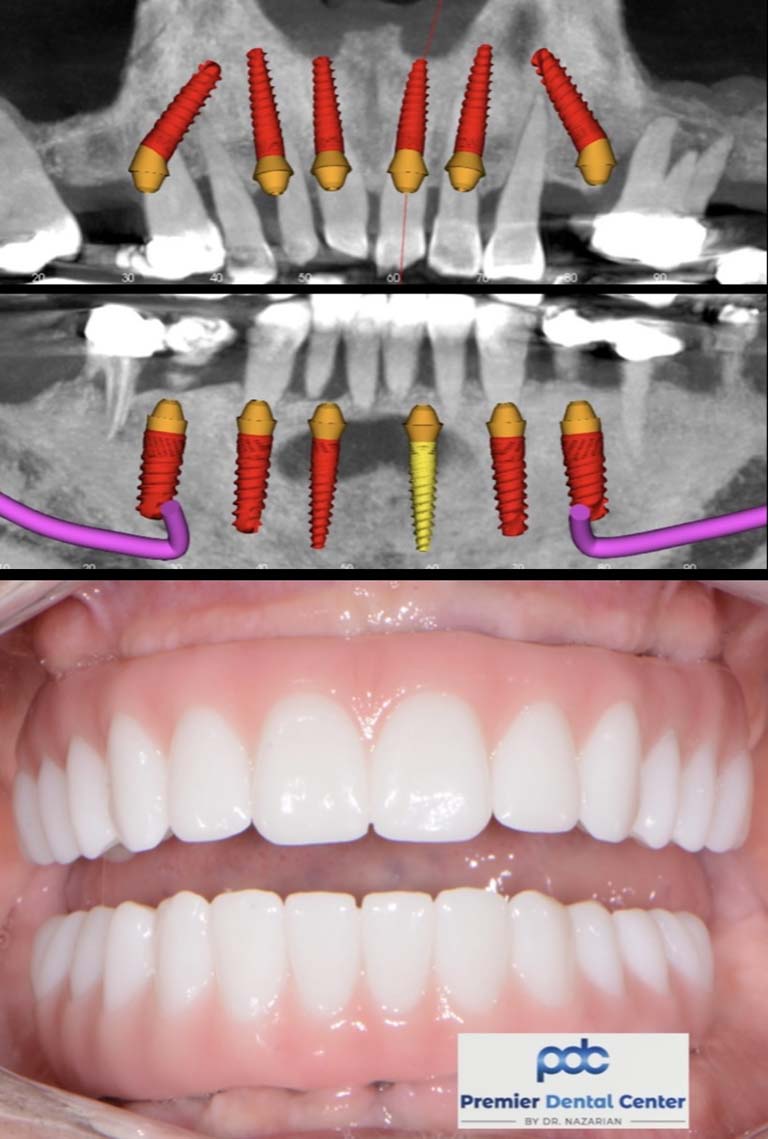The Ultimate Guide To Dental Sense
The Ultimate Guide To Dental Sense
Blog Article
What Does Dental Sense Do?
Table of ContentsWhat Does Dental Sense Do?The Best Strategy To Use For Dental SenseThe Only Guide to Dental SenseDental Sense Things To Know Before You Buy
are medical devices operatively dental implanted right into the jaw to restore a person's capability to eat or their look. They offer assistance for fabricated (phony) teeth, such as crowns, bridges, or dentures. When a tooth is shed because of injury or condition, an individual can experience issues such as rapid bone loss, malfunctioning speech, or changes to eating patterns that result in discomfort.Oral implant systems contain an oral implant body and oral implant abutment and may likewise consist of an abutment fixation screw. Dental veneers cost. The dental implant body is surgically put in the jawbone instead of the tooth's origin. The oral implant joint is normally affixed to the dental implant body by the abutment addiction screw and expands with periodontals right into the mouth to support the connected synthetic teeth
(https://pxhere.com/en/photographer-me/4492670)Framework of The Dental Implant System picking oral implants, talk with your dental company concerning the prospective advantages and threats, and whether you are a candidate for the procedure. Points to consider: Your overall wellness is an essential element in establishing whether you are a great candidate for dental implants, how much time it will take to recover, and for how long the dental implant might remain in place.
Smoking may influence the recovery process and lower the long-term success of the dental implant. The recovery process for the implant body might take a number of months or longer, throughout which time you generally have a short-lived abutment in location of the tooth. the dental implant treatment: Carefully adhere to the oral health directions provided to you by your dental service provider.
Things about Dental Sense
Implant failure can result in the need for another procedure to take care of or change the implant system. Restores the ability to eat Recovers aesthetic look Assists keep the jawbone from shrinking due to bone loss Protects the health of the bordering bone and periodontals Aids keep adjacent (close-by) teeth steady Enhances lifestyle Damages to surrounding all-natural teeth throughout implant placement Injury to the surrounding cells throughout surgical treatment, such as sinus opening Injury during surgical procedure (for example, fracture of bordering jawbone) Insufficient function, such as feeling like the teeth do not bite together normally A sensation that the tooth is loose or turning in position arising from an abutment screw loosening Implant body failing (looseness of the dental implant body) due to systemic infection, which may be most likely in patients with unchecked diabetes mellitus as a result of local infection in bone and gums supporting the dental implant body because of delayed recovery, which might be most likely in people who smoke Difficulty cleaning up the gum tissues around the implant, leading to inadequate oral health Untreated periodontal illness Post-surgical feeling numb as a result of nerve impingement or damage Always alert health and wellness treatment suppliers and imaging specialists that you have dental implants before any magnetic resonance imaging (MRI) or x-ray procedures.
FDA is not familiar with any type of damaging events reported for MRI or x-ray treatments with dental implants. Oral implants systems are commonly made of products that follow global consensus requirements of the International Company for Standardization (ISO) or ASTM International. These requirements have information of what makes a risk-free material.

A dental implant is a framework that replaces a missing tooth. With screw-like tools, the cosmetic surgeon inserts an implant right into the jawbone, and it works as a support for a fabricated tooth, called a crown. A tool called an abutment connects the man-made tooth to the oral implant. The crown is customized to fit the individual's mouth and match the shade of their teeth.
Everything about Dental Sense
Some individuals are not eligible for dental implant surgical treatment. It is for oral doctors to operate people with: intense illnessuncontrollable metabolic diseasebone or soft tissue illness or infectionIf these problems are fixed, a person can have the surgery. In, dental doctors abstain from operating individuals with: If people with any one of the above undergo oral implant surgical treatment, there is a greater threat of the dental implant failing.

Oral dental implant surgical procedure is a personalized procedure. learn this here now It's not the same for every person. The following provides a general summary of what you can anticipate your dentist, oral cosmetic surgeon, periodontist or prosthodontist to do: Put the implant surgically. Give you time to recover. Affix the article and final crown, bridge or denture.
Next off, your specialist will thoroughly position the dental implant right into your jaw. Ultimately, your specialist will certainly reposition your gum tissues and close the cut with stitches. If your implant is near the front of your mouth, your dentist will certainly make a short-term tooth for you to wear till you recover. By doing this, you will not have a space in your smile while you recoup.
Not known Details About Dental Sense
During the healing stage, your jawbone ought to fuse to the oral implant. This procedure can take anywhere from 3 to 9 months.
Once your dental implant heals, your dental professional can connect the abutment (tiny adapter article) and your final repair (crown, bridge or denture). This usually takes concerning one hour to finish and may need a 2nd small surgery. You shouldn't feel any type of pain during your dental implant treatment due to the fact that your company will make use of medicine to numb your periodontals.
Report this page